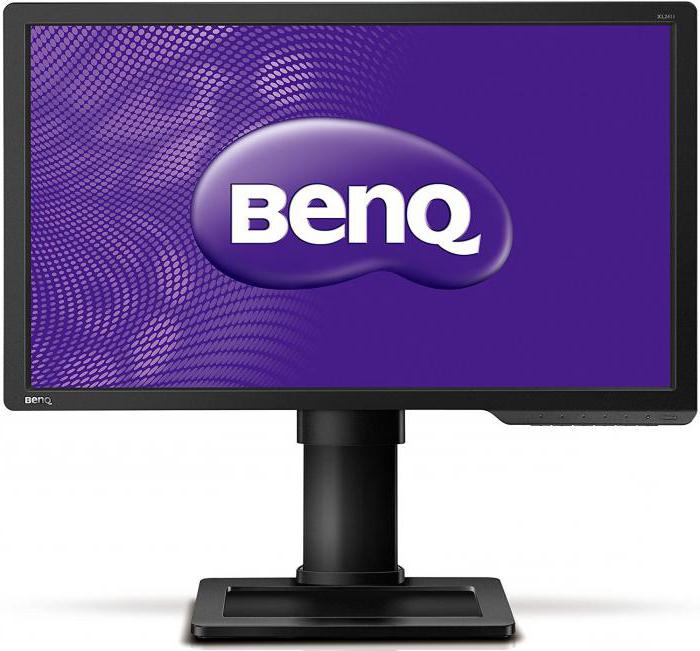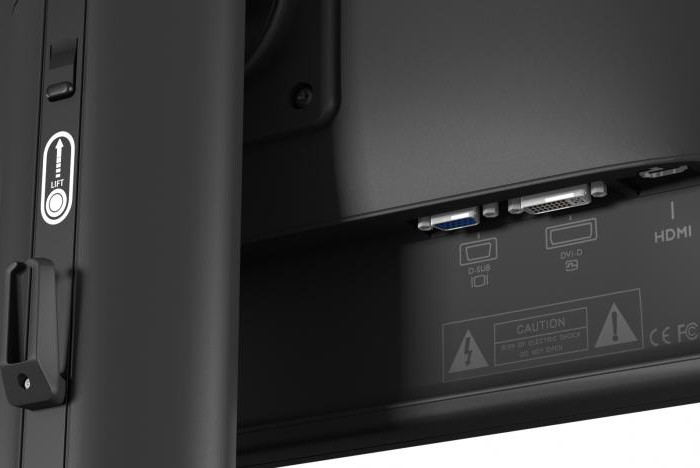According to the reviews of owners who previously tried to save on the monitor, at first glance at the BenQ XL2411Z they were amazed at how much better it is, what they have encountered so far. Perhaps this is a consequence of the poor quality of their previous displays compared to the high class of this device. However, is it worth paying $ 329 for a monitor with a screen diagonal of 24 inches? The answer may be mixed.
The XL2411Z is an evolution of the XL2420T, BenQ’s previous generation gaming display. The chassis is the same, but the overall design is better. Providing a resolution of 1920 x 1080 pixels, a refresh rate of 144 Hz, a response time of 1 ms and a flicker-free LED backlight with a maximum brightness of 350 cd / m2, the manufacturer achieved the best characteristics. Nvidia 3DVision 1 and 2 are also supported.
BenQ XL2411Z Design Review
To start with the basics, the build quality is fantastic. The stand is pleasant in appearance and reliable, has a height adjustment and makes it possible to tilt and rotate the monitor 90 degrees in the vertical plane (in portrait position) both for viewing and for accessing the connectors at the bottom of the rear panel. The base is wide and flat, which allows you to use it as a storage for, for example, DVD-ROM drive. The kit includes a dual-channel DVI cable, which is required for scan frequencies of more than 60 Hz. The buttons for navigating the menu are conveniently located, but too close for a more confident press, although the need to save space can be understood. Fortunately, the manufacturer offers the so-called Display Pilot - software that allows you to make all the necessary settings using the mouse and keyboard. This function was liked by many users, because, regardless of the effectiveness of organizing the menu, it is faster and more convenient to do everything with the mouse.

BenQ XL2411Z monitor is equipped with VGA, dual channel DVI, HDMI and USB 2.0 ports located on the rear panel. The XL2420T had a DisplayPort, which is already missing in this model. Why use a DP connector if dual channel DVI offers more bandwidth? In addition, there are two USB 2.0 ports on the side for connecting peripheral devices .
Screen quality
Even if you ignore all the additional functionality that the BenQ XL2411Z monitor offers, the difference with the regular display is striking. At 100% brightness, it seems about twice as bright, and the colors are much more vibrant and expressive. In addition to pre-installed profiles, it is possible to record several of your own. So you can have some settings for games, others for everyday use, still others for movies, etc. Moreover, you can download color profiles from other owners, including well-known gamers, and then use them.
Functionality
So what does the buyer get for their money? Quite a lot, even for professional gamers. There is a motion blur reduction system Motion Blur Reduction, a low blue light option that gives the effect of gaming glasses such as Gunnar Optics, reduced flicker independent of brightness settings, Black eQualizer, which helps to brighten dark areas without blurring them, and completing just 1 ms response time.
Monitor for professionals
So how does it all work? And does it justify the money spent? Users note that all functions are functional, but there are more than necessary. The display is designed truly for professionals with the thought of frame rates to the extent that it supports two different presets. High-end gamers need ultra-short response times, as much sharpness and as little blur as possible, so that the monitor is ideal for such an application. However, for a typical user, all this may not be in demand. Although in general the difference with the regular display is very noticeable, most likely, it can be attributed to the better screen quality than any of the declared functions. However, owners aware of their incompetence recognize the lack of the necessary skills to use most of the opportunities provided.
Out of the game
At the same time, another question arises: does this orientation on gamers have a negative impact on the everyday use of the monitor (watching videos, typing, surfing the web, etc.)? According to the owners, in this regard, the display is all right. Game settings work fine for everything else. Even if some parameters are not suitable, it is very easy to change your profile to everyday and not worry about anything else.
Pros and cons
The BenQ XL2411Z monitor has an excellent response time that allows you to play without delay, there is a mode of eliminating blur, "lowered blue" to reduce eye strain, flicker-free illumination. However, in general, there are several problems. Firstly, in order to set the frequency above 60 Hz (up to 100, 120 or 144), a two-channel DVI cable is required. Since it is included in the kit, the only problem will be replacing the old one. In addition, although the menu is easy to navigate and the Display Pilot makes this even easier, it seems overly cumbersome. At BenQ XL2411Z, the setup even suppresses at first, and you have to search the Internet for the best options, since taking into account all the available functions, there are too many combinations to sort through. Without first adjusting the monitor, the image quality is terrible. According to user reviews, there is inaccurate color reproduction, bright areas faded, insufficient contrast, too much brightness, which is not necessary.

Find your buyer
The decision to purchase a monitor is not easy. Everything that he demonstrates is at a high level. The problem is that he is too good. The display does not leave the impression of such a device that everyone could use. Perhaps it is too complicated for the average lover of computer games. For those who look at the monitor and notice blurriness or have a desire to reduce display delays, BenQ XL2411Z will be ideal. Most 144-Hz displays are very expensive, and this model allows you to save money. However, those users who have never noticed this before may lose out, because the recommended price of $ 329 on BenQ XL2411Z allows you to buy a larger 27 ”monitor with better image quality. Nevertheless, it is difficult to imagine that someone would be unhappy with the choice of this display. Just for less money, you can buy a monitor without functions that are not used anyway. It all comes down to the fact that the buyer receives what he pays for, but does he need it?